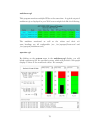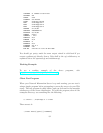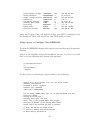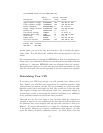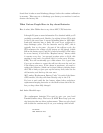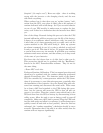Configuring Your EEPROM
If you have a SmartUPS, there are depending on the UPS at least 12 different
values stored in the EEPROM that determine how the UPS reacts to various
conditions such as high line voltage, low line voltage, power down grace
periods, etc.
In general, for the moment, we do not recommend that you change your
EEPROM values unless absolutely necessary. There have been several re-
ported cases of problems setting the Low Transfer Voltage. Consequently,
if at all possible, do not attempt to change this value.
If despite these warnings, you must change your EEPROM, we recommend
connecting your UPS to a Windows or NT machine running PowerChute
and making the changes.
apcupsd No Longer Configures EEPROM:
Unlike version 3.8.6, apcupsd version 3.10.x no longer has code to program
the EEPROM. Instead we have implemented interactive EEPROM mod-
ification code in the apctest program. EEPROM programming must be
done with apcupsd stopped so that apctest can access the UPS. In addition,
EEPROM programming is currently implemented only for UPSes using the
Smart protocol running in serial mode. Perhaps at a later time when the
appropriate kernel modifications are standard, we will extend EEPROM
programming to USB models.
Before changing your EEPROM, you should make a printed copy of the
current state of your UPS before any EEPROM changes so that you can
check the changes that you have made. Do so by printing a copy of the
output from apcaccess status and also print a copy of the output from
apcaccess eprom.
Once this is done, choose which values of the EEPROM you want to change.
Typical output from apcaccess should look like the following:
apcaccess eeprom
Valid EPROM values for the SMART-UPS 1000
Config Current Permitted
Description Directive Value Values
================================================================
Upper transfer voltage HITRANSFER 253 253 264 271 280
84






